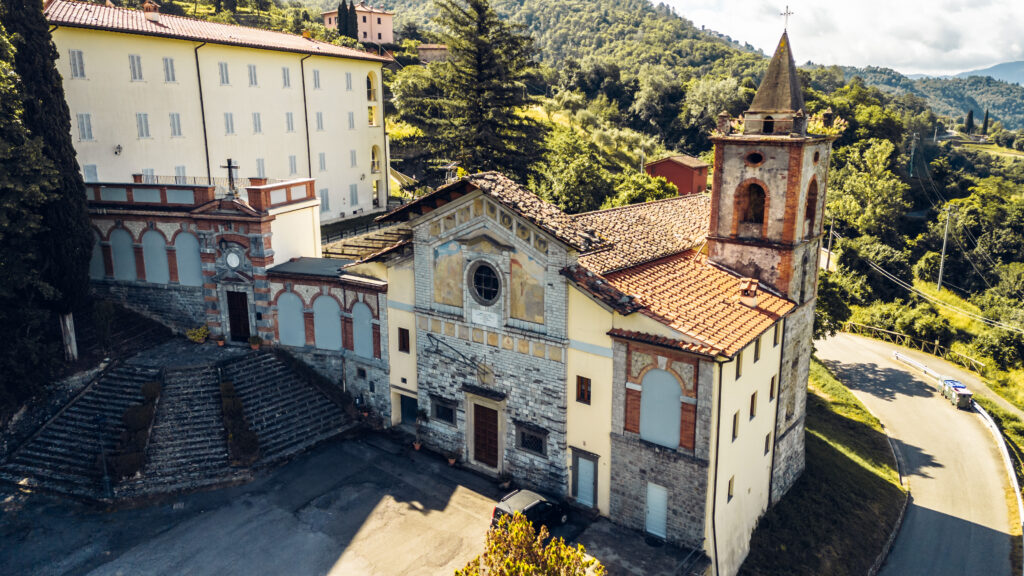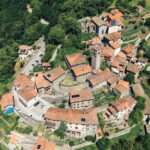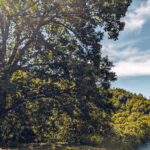The façade of the Sanctuary was painted in 1927 by the Florentine painter Virginio Scuffi. Here we can find represented the coats of arms of all the municipalities of Garfagnana and the one of Barga, testing how important for the Marian devotion this place has been in the Valle. On the sides of the façade there are two frescoes depicting some remarkable moments in the history of the Sanctuary.
A church dedicated to Mary already existed near Migliano since the 12th century. The oratory called "Church of S. Maria de Miliano” is in fact mentioned in a Bull of Pope Alexander III dated 1168. In the 14th century the church was embellished with a fresco depicting the Madonna della Stella. During a reconstruction around 1500 the ancient fresco was replaced by a canvas depicting the Madonna with S. Marco and S. Rocco at her sides. In the second half of the 1700s, in one of the many decrees regarding the deadhand control, the Este government decided to suspend some ecclesiastical assets, including the Oratorio della Stella which, for easier sale to private individuals, was also demolished.
After various events, the remains of the old oratory and the surrounding area came into the possession of the Cav. Nicola Raffaelli from Fosciandora, who decided to build a lemon house and a vegetable garden there. On July 4 1798, while the bricklayer Giuseppe Iacopucci was demolishing the ruins, hidden behind a small wall, the ancient fresco dating back to the 14th century depicting the Madonna della Stella came to light (left-hand fresco on the façade). That almost miraculous discovery did not leave indifferent either the local population and the surrounding valley, nor Raffaelli, who, in harmony with his family, decided to build a new oratory in the same place under the ancient title of Maria SS. della Stella. The Raffaelli family's constant desire was to entrust the care of the Sanctuary to a religious order.
In 1903, the Order of the Regular Clerics of the Mother of God OMD settled in in the Sanctuary (fresco on the right on the façade). In those years, the construction of the adjacent convent was completed, intended to host young people from all over Italy. Since those years the Sanctuary has been a destination for pilgrimages and throughout the century there have been impressive religious events and celebrations that attracted crowds of devotees from all over the surrounding area.
During the Second World War, for a few months, the convent was occupied by German troops.
Then in the 1980s the convent was substantially closed and fell into decay.
In the 21st century the Convent underwent a massive renovation and for some years it was used as a restaurant and holiday home, until the Covid period, when the structure was closed again.







